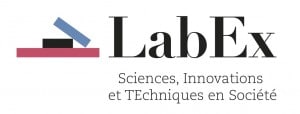2021
Technical Reports
Analyse des 44 opérations d’expertise scientifique collective, d’étude et de prospective réalisées par l’Inra de 2000 à 2020. Résumé du volume 1: analyse textuelle des résumés, INRAE (France): 20 ans d’expertise scientifique collective, de prospective et d’étude à l ’INRA. Technical Report
2021.
2020
Technical Reports
Stocker du carbone dans les sols français : Quel potentiel au regard de l’objectif 4 pour 1000 et à quel coût ? Technical Report
INRAE 2020.
2018
Journal Articles
An Innovative Methodological Framework for Analyzing Existing Scientific Research on Land-Use Change and Associated Environmental Impacts Journal Article
In: Sustainable Agriculture Reviews, vol. 30, pp. 1-13, 2018.
Textual Analysis of Published Research Articles on the Environmental Impacts of Land-Use Change Journal Article
In: Sustainable Agriculture Reviews, vol. 30, pp. 15-38, 2018.
2017
Technical Reports
Effets environnementaux des changements d'affectation des sols liés à des réorientations agricoles, forestières, ou d'échelle territoriales : une revue critique de la littérature scientifiques Technical Report
Agence de l'Environnement et de la Maîtrise de l'Energie 2017.
LIST OF SCIENTIFIC WORKS THAT HAVE USED CORTEXT MANAGER
(Sources: Google Scholar, HAL, Scopus, WOS and search engines)
We are grateful that you have found CorTexT Manager useful. Over the years, you have been more than 1050 authors to trust CorTexT for your publicly accessible analyzes. This represents a little less than 10% of CorTexT Manager user’s community. So, thank you!
We seek to understand how the scientific production that used CorText Manager has evolved and to characterise it. You will find here our analysis of this scientific production.
Browse documents by main topics
| What types of documents? |
|---|
| What types of documents? |
| 234 journal articles |
| 42 conference proceedings |
| 41 conference (not in proceedings) |
| 39 Ph.D. thesis |
| 31 reports |
| 30 online articles |
| 23 book chapters |
| 21 masters thesis |
| 12 workshop |
| 11 bachelorthesis |
| 10 book |
| 5 miscellaneous |
| 2 presentation |
| 1 manual |
| 1 workingpaper |
| 1 proceedings |
| Main peer-reviewed journals |
|---|
| Main peer-reviewed journals |
| Scientometrics |
| I2D - Information, données & documents |
| Réseaux |
| Revue d’anthropologie des connaissances |
| PloS one |
| Revue d'anthropologie des connaissances |
| Library Hi Tech |
| Journal of Rural Studies |
| médecine/sciences |
| Big Data & Society |






